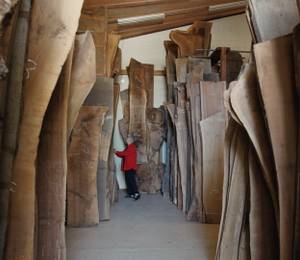Rotterdam, The Netherlands – Located in Pune, India’s 8th largest city and one of the fastest-growing cities in the country, Future Towers provides 1,068 apartments for a diverse section of the rapidly expanding population, a true vertical village that will house around 5,000 people in one building.
Future Towers is a part of Amanora Park Town, a community created in 2007 thanks to legislation passed in 2005 by the state of Maharashtra to encourage the development of residential “townships” near its cities. In Pune, these townships help to house the young professionals attracted to the city by its auto-manufacturing and technology sectors but, as with much of the rapid development all over India, many of the new buildings on Pune’s outskirts are generic, repetitive residential towers. In just 11 years, Amanora Park Town has grown to over 25,000 residents by focusing on a diverse, high-quality mixture of towers alongside low-density villas. But the pressure to expand faster with more high-density, low-individuality housing was ever-present.
MVRDV’s design for the Future Towers aimed to offer an alternative to this pattern, while still delivering apartments at the usual low price (since competition for new residents between different housing developments is fierce). Instead of a cluster of freestanding buildings, MVRDV’s response to the brief was a singular mountainous structure with peaks and valleys, under which 1,068 apartments are unified in one building. However, despite its expressive appearance, the design of Future Towers in fact stems from a series of methodical decisions based on MVRDV’s research into Indian housing.
A critical deviation from the norm was to convince the client that the entire development would be more vibrant with a mixture of different units. This way, the building would ensure that users from the full spectrum of India’s exploding middle class all mingle – including young, mobile professionals who are new to the city; older, established residents; and families both large and small, all at a range of income levels. Apartments ranging from 45 square metres to 450 square metres are mixed together, a diversity enabled by the building’s mountainous shape and the shifting floor plans that it generates.
In Asia cities are growing so fast, and uniform repetitive residential towers are the norm,” said Jacob van Rijs, Principal and Co-Founder of MVRDV. “With our design, we are making an effort to offer more variety and bring people from more different backgrounds together. In the original master plan, 16 separate towers were planned, all of which would have more or less the same type of apartments. The MVRDV team thoroughly researched modern Indian housing and came up with a system to create a mix of different types of apartment inside one building. This project will attract residents with a variety of incomes, something that will benefit the diversity of Amanora Park Town. Thanks to the client’s willingness to try something new, the efficiency needed for mass housing has been achieved without cutting back on residents’ comfort.”
The completed building is just the first phase of the larger Future Towers project at Amanora Park Town, which comprises 3 phases and around 3500 dwellings in total. MVRDV is currently working on the second phase of the project.












